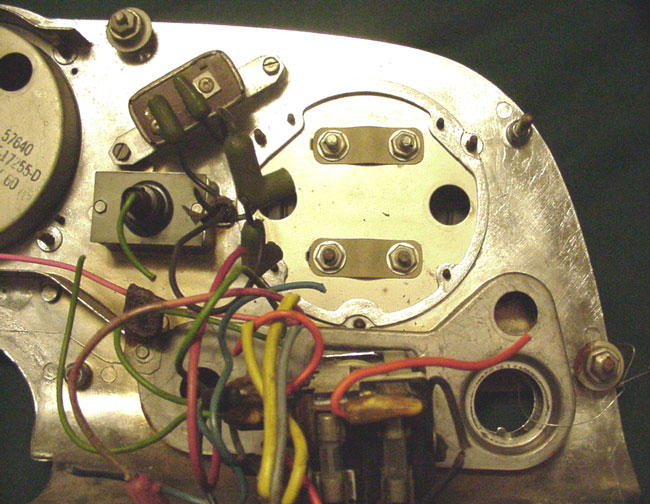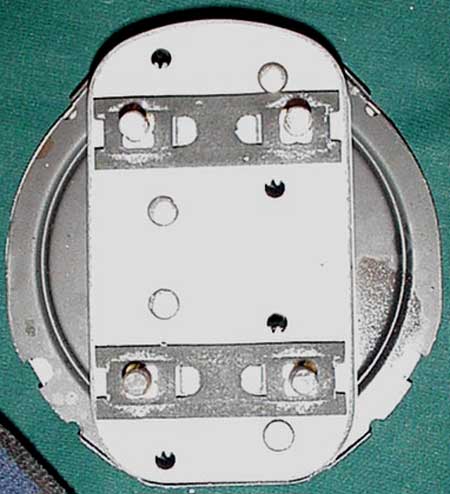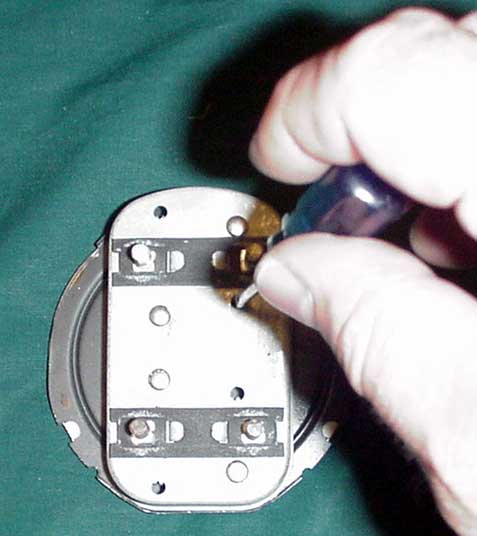
Calibrating Fuel and Temperature Gauges
on a 1958 1959 1960 Thunderbird
Frustrated that your fuel gauge does not read full when the tank is full or it does not read empty when the tank is near empty? The fuel gauge can be adjusted and the temperature gauge can be similarly adjusted. I found out about this empirically by disassembling the gauges. You won't find these instructions in a shop manual.
First see if your gauge voltage regulator is working. It is located between the speedometer and the fuel/temperature gauge. On some Tbirds, it has been taken off the back of the instrument panel and mounted to a metal dash frame support. It cuts the voltage to the gauges to 6 volts. If your fuel gauge is reading full and then suddenly drops to empty when the tank is nearly empty, the voltage regulator is probably blown and is delivering 12 volts to gauges. A volt meter connected from the output from the voltage regulator will show a fluctuating voltage if the voltage regulator is working properly. The voltage regulator is a simple bimetallic device.
If the voltage regulator is working properly, you can then try calibrating the gauges.

On the back of the gauge. you will see four speed nuts which hold on two cardboard insulators and a round metal backing plate. Remove the four speed nuts, cardboard insulators and the backing plate.

On the back you will two sets of gear-like teeth in access holes for both the fuel and the temperature gauge. The needles rest on two pivots that are adjusted by these gears.

Fill up the fuel tank. Hook up the fuel gauge to the the wires in the dash via jumper wires. Rotate a screwdriver in the access hole to adjust the pivot for max ( If I remember right, it is the right one) When the tank is low you adjust the other side of the pivot for low using the other pivot hole (the left one). Alternately, instead of filling and using up the gas in the tank you can pull out the sending unit and manually move the float of the fuel sender and then adjust the pivots on the gauge.
The temperature gauge can be similarly adjusted.
Alexander Sosiak